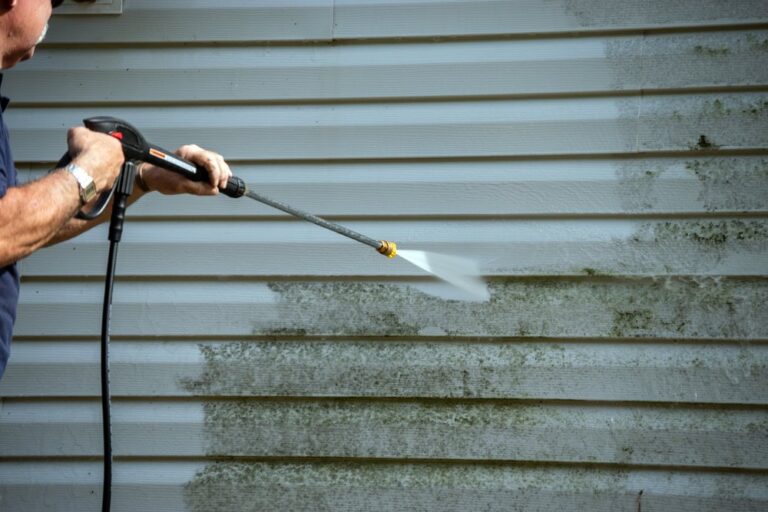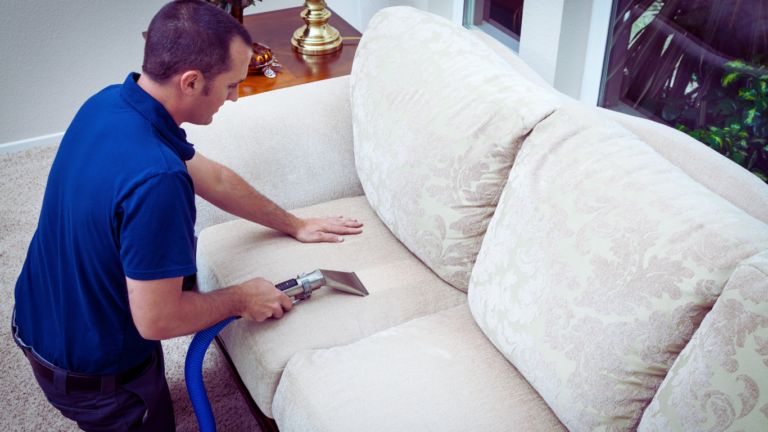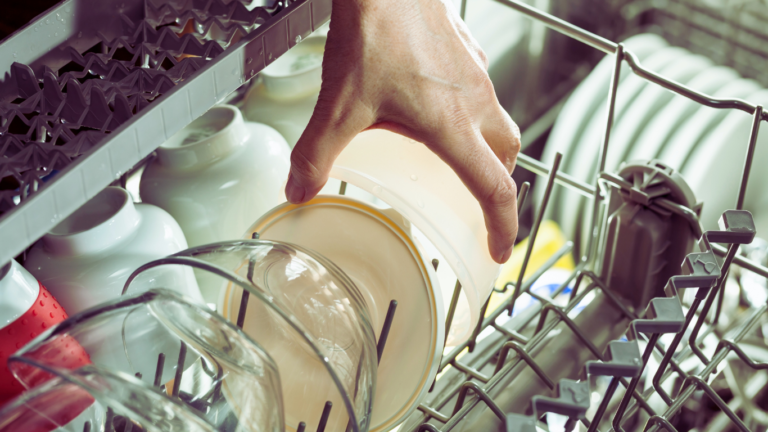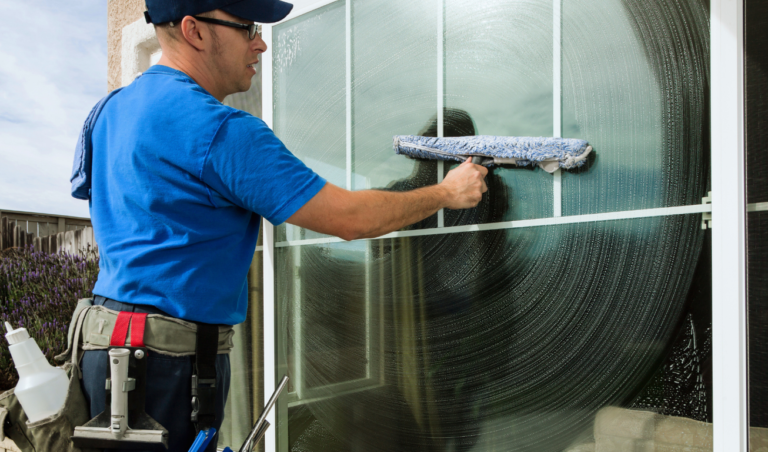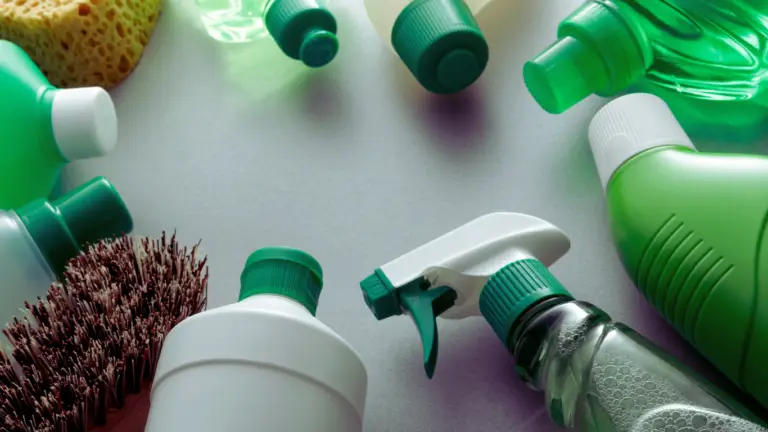Curtain Cleaning with Accurate Guidance to Keeping Your Curtains Fresh and Allergen-Free
Curtains do much more than frame your windows; they’re essential for privacy, light control, and enhancing the aesthetic appeal of your home. However, curtains are notorious for collecting dust, dirt, and allergens, which makes curtain cleaning a vital part of household maintenance. Proper care can extend the life of your curtains and keep your home environment healthy. In this guide, we’ll dive deep into the most effective ways to clean, maintain, and care for your curtains, whether you prefer DIY methods or professional services.
Why Curtain Cleaning is Essential for Home Maintenance
Curtains can easily become a breeding ground for dust mites, allergens, and even mould. Over time, the accumulation of these particles can degrade the air quality in your home, potentially leading to allergies or respiratory issues. Regular cleaning helps maintain the cleanliness and hygiene of your living space, ensuring that your home remains a healthy environment for you and your family.
How Dirty Curtains Can Affect Indoor Air Quality
Dirty curtains aren’t just unsightly—they can actively harm the air you breathe. When curtains collect dust, pollen, and pet dander, these allergens can become airborne each time you open or close the curtains. Asthma and allergy sufferers may experience worsening of their symptoms as a result. Therefore, routine curtain cleaning is crucial for maintaining good air quality indoors.
Types of curtains and Their Unique Cleaning Needs
Fabric Types: Heavy vs. Light
Different curtain fabrics require different cleaning approaches. For example, heavy drapes like velvet and thick cotton may require more intensive care, such as dry cleaning or steam cleaning. Lightweight curtains like sheer fabrics are usually easier to clean and can often be washed at home.
Special Care for Delicate Fabrics (e.g., Silk, Velvet)
Fabrics like silk, velvet, or any curtain that’s lined or embroidered will likely need professional cleaning services. These delicate materials are prone to shrinking, fading, or damage if not handled properly, making dry cleaning or specialised hand washing essential.
How to Clean Curtains at Home
Step-by-Step Guide to Washing Curtains
Remove the Curtains: Take down the curtains and remove any hooks or rings.
Pre-Treat Stains: Use a gentle detergent or fabric cleaner to pre-treat any visible stains.
Wash the Curtains: Depending on the fabric, wash the curtains either in a washing machine on a gentle cycle or by hand in cold water.
Dry the Curtains: Air-dry your curtains, as using a dryer can cause them to shrink. Alternatively, hang them back up to dry naturally.
Machine Washable vs. Hand Washable Curtains
Not all curtains can be machine washed. Heavier or more delicate fabrics should be hand-washed to avoid damage. Always check the care label before cleaning your curtains to determine the best method.
Dealing with Stubborn Stains: Pre-treating and Washing
For tougher stains like grease or wine, apply a fabric-safe stain remover before washing. Allow the cleaner to sit for at least 15 minutes before washing to ensure the stain lifts effectively.
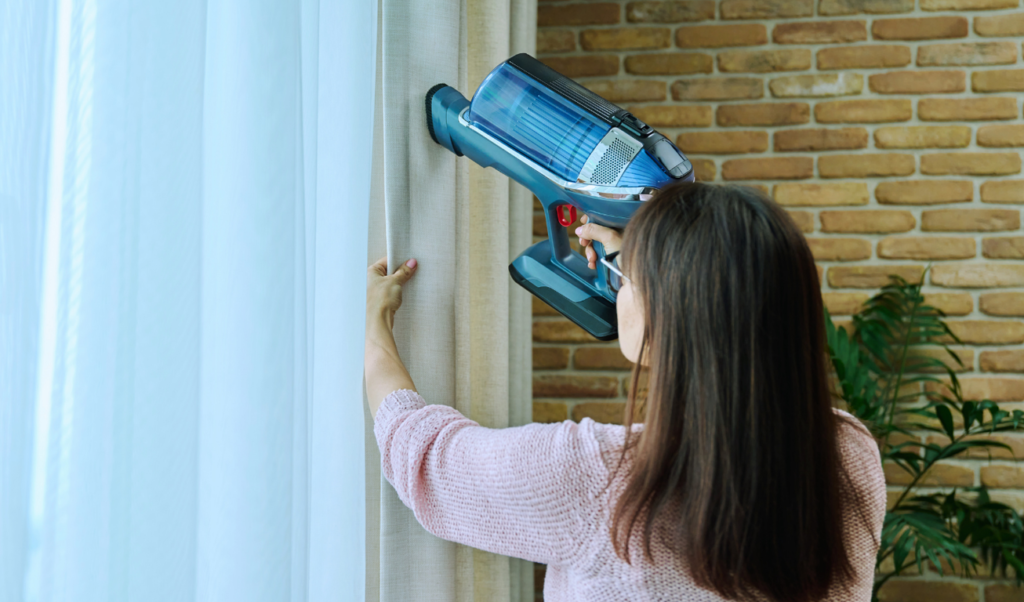
Curtain Dry Cleaning
What Happens During Curtain Dry Cleaning?
Curtain dry cleaning uses a solvent instead of water to clean fabrics, making it ideal for delicate or non-machine-washable curtains. The process removes dirt, oils, and stains without shrinking or damaging the fabric.
Why Some Curtains Need Dry Cleaning
Materials like velvet, silk, and some blends are sensitive to water and can be ruined by regular washing. Curtain dry cleaning preserves the texture and colour of these fabrics, ensuring they last longer.
Cost and Benefits of Curtain Dry Cleaning
The average cost of curtain dry cleaning ranges from $50 to $150, depending on the size and fabric. Although dry cleaning is more expensive than DIY cleaning, it helps maintain the integrity of the curtains, making it worth the investment for valuable or delicate fabrics.
How to Clean Mould Off Curtains?
Why Mould Develops on Curtains
Mould thrives in damp environments, and curtains exposed to high moisture levels—like those in bathrooms or kitchens—are particularly susceptible. If not addressed promptly, mould can spread quickly, damaging the fabric and posing health risks.
Effective Home Solutions for Mould Removal
You can remove mould from curtains using a mixture of water and white vinegar or a commercial mould remover. For light fabrics, gently scrub the affected areas with a soft brush and rinse thoroughly.
How to Prevent Future Mould Growth
To avoid future mould issues, ensure that rooms with curtains are well-ventilated and avoid letting moisture accumulate. Using a dehumidifier in humid areas can also help prevent mould growth.
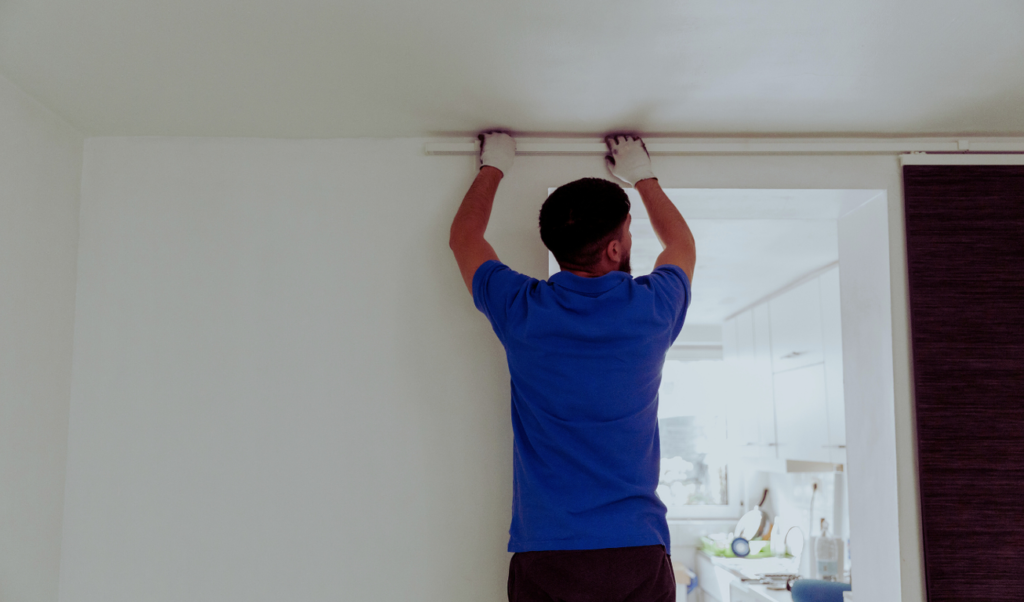
Cleaning Different Curtain Materials
Cotton and linen : easy maintenance
Cotton and linen curtains are generally easy to care for and can be machine washed. Use a mild detergent and a cold wash cycle to prevent fading and shrinkage.
Velvet, Silk, and Other Sensitive Materials
For materials like velvet and silk, always opt for dry cleaning. Water can readily destroy these materials; thus, handling them carefully is advised.
How to Remove Stains from Curtains
Common stains found in homes and how to get rid of them
Dust, spills, and even insects may easily discolour curtains. The most common stains include grease, wine, and food. Spot cleaning with a mixture of water and a mild detergent is usually effective for most stains.
Spot Cleaning Techniques for Different Fabrics
When spot cleaning, always test a small, inconspicuous area first. Use a damp cloth and dab at the stain—never rub it, as this can spread the stain or damage the fabric fibres.
How to Avoid Permanent Damage during Stain Removal
Be cautious when using commercial stain removers, as some can bleach or discolour certain fabrics. Whenever in doubt, always refer to the manufacturer’s instructions or get professional advice.
Curtain Steam Cleaning
The Power of Steam for Cleaning Curtains
Steam cleaning is an eco-friendly way to refresh curtains without taking them down. The heat from the steam kills bacteria, dust mites, and other allergens, making it a great option for homes with pets or people who suffer from allergies.
How to Steam Clean at Home Without Taking Curtains Down
Invest in a handheld steam cleaner and gently pass the steam over the curtains, ensuring you cover the entire surface. Steam cleaning is particularly effective for removing wrinkles and freshening curtains between washes.
Benefits of Steam Cleaning for Health and Hygiene
Steam cleaning not only sanitises your curtains but also helps improve indoor air quality by eliminating allergens. It’s an efficient way to maintain cleanliness without the hassle of frequent laundering.
How to Maintain Clean Curtains
Dusting and vacuuming curtains regularly
Regular vacuuming is one of the easiest ways to keep your curtains free from dust and debris. Use a vacuum cleaner attachment to gently remove dust, paying extra attention to pleats and folds where dirt accumulates.
Seasonal Deep Cleaning: When and How
Curtains should be deep cleaned at least twice a year. This could be done either through washing, dry cleaning, or steam cleaning, depending on the fabric type. For areas with high traffic or exposure to outdoor elements, more frequent cleaning may be necessary.
Keeping Curtains Fresh Between Washes
To keep curtains fresh between washes, regularly shake them out to remove dust and dirt. You can also use fabric fresheners or lightly spray them with a water-vinegar mixture to neutralise odours.
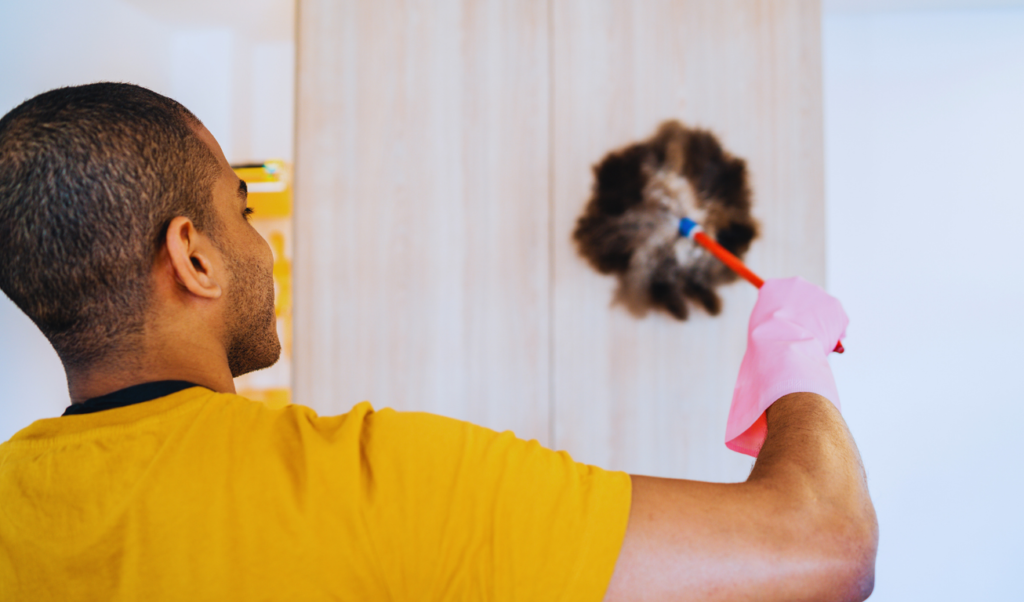
Curtain Cleaning Near Me
Finding reliable curtain cleaning near me
If you prefer professional help, search for reputable curtain cleaning services in your area. Online reviews and word-of-mouth recommendations can guide you in choosing the best service.
Questions to Ask Before Hiring a Professional Curtain Cleaning Near Me
Before hiring, ask about the cleaner’s experience with different fabric types, the cleaning methods they use, and the estimated time for the service. Make sure they offer insurance in case of accidental damage.
How to Select the Greatest Service Depending on Fabric Type
Some cleaners specialise in specific fabrics like silk or velvet, so ensure you select a service that is experienced in handling the type of curtains you have.
Cost of Curtain Cleaning Services
Factors That Influence the Price of Curtain Cleaning
The cost of curtain cleaning depends on several factors, including fabric type, the size of the curtains, and the method of cleaning. Dry cleaning and steam cleaning tend to be more expensive than DIY options.
How to Save Money While Keeping Curtains Clean
To save on professional cleaning costs, consider regular vacuuming and spot cleaning at home. Some companies also offer discounts for bulk cleaning or repeat customers.
Comparing Prices Between DIY and Professional Services
While DIY cleaning is more affordable, professional services provide a deeper clean and help maintain the quality of your curtains. Evaluate the long-term benefits of professional cleaning versus the cost before making a decision.
DIY Curtain Cleaning vs. Professional Services
Pros and Cons of Cleaning Curtains at Home
DIY cleaning saves money and can be done at your convenience. However, it may not always deliver the deep clean that professional services provide, especially for heavy or delicate curtains.
When Professional Cleaning is Worth the Investment
If your curtains are made of delicate fabrics, have significant stains, or haven’t been cleaned in a long time, professional cleaning is worth the investment to avoid damage.
Risks of DIY Cleaning and How to Avoid Them
The biggest risk with DIY cleaning is damaging your curtains by using the wrong cleaning method. Always check care labels and perform spot tests before cleaning.
Benefits of Clean Curtains
How Clean Curtains Improve Indoor Air Quality
Regularly cleaned curtains help reduce the presence of dust, pollen, and other airborne particles, which can improve your home’s overall air quality.
Enhancing the Appearance of Your Living Space
Clean curtains make your home look fresh and inviting. They can also enhance natural light flow, giving your rooms a brighter, more airy feel.
Longevity of Curtains with Regular Cleaning
By maintaining a regular cleaning routine, you can significantly extend the lifespan of your curtains. This not only saves you money in the long run but also helps you preserve the aesthetic appeal of your home.
Curtain Cleaning Tips for Allergy Sufferers
Reducing allergens like dust and pollen in curtains
For those with allergies, regular vacuuming and steam cleaning are essential. Curtains trap allergens that can worsen symptoms, so frequent cleaning is crucial.
Choosing allergy-friendly fabrics and cleaning
Opt for hypoallergenic fabrics and cleaning products free of harsh chemicals to minimise allergic reactions. Natural materials like cotton and linen are good choices for allergy sufferers.
Best Practices for Keeping Your Curtains Allergy-Free
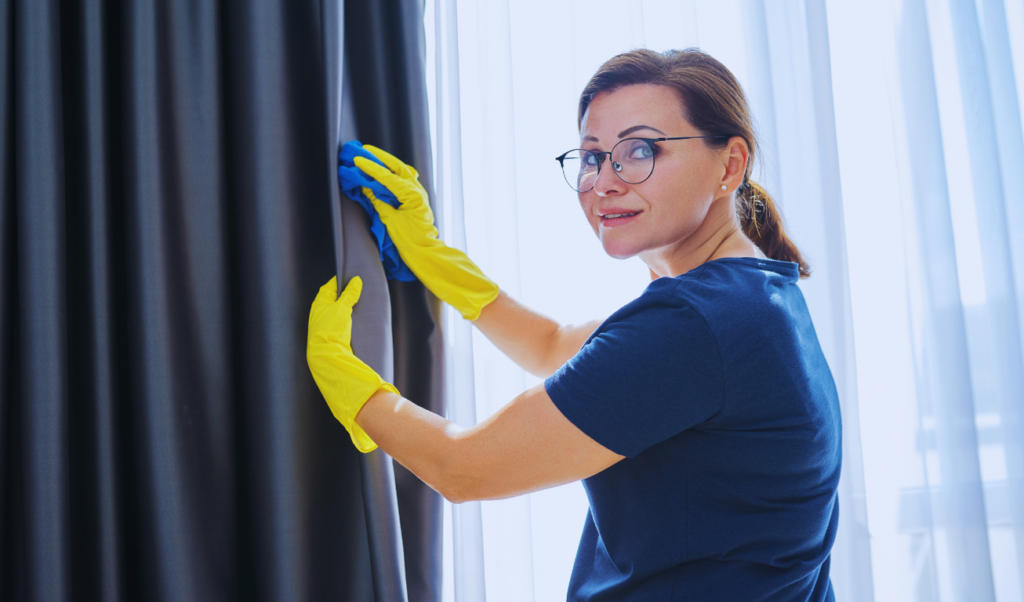
In addition to regular cleaning, consider washing your curtains more frequently during allergy season. Keeping windows closed on high pollen days will also help reduce allergen buildup on your curtains.
Curtains play a crucial role in both the aesthetic and functional aspects of your home. Whether you opt for DIY cleaning or hire a professional service, maintaining clean curtains is essential for keeping your living space fresh, inviting, and healthy. Regular care will not only extend the lifespan of your curtains but also enhance the air quality in your home. In conclusion, the benefits of regular curtain cleaning far outweigh the costs, and adopting the right cleaning method for your fabric type ensures lasting beauty and hygiene.


